20 photos of French curtains, in the kitchen, bedroom, living room
These curtains, also called awnings, are distinguished by beautiful uniform folds (scallops) along the entire length of the canvas. Their homeland is France, where they appeared in the XVIII century. Awnings were sewn exclusively from expensive fabrics and were used to decorate windows in the houses of nobles.
The principle of operation of French curtains is a special cord lifting mechanism that holds the canvas in a certain shape.
Many people confuse awnings with Austrian curtains. A distinctive feature of the former is that they have folds (scallops) along the entire length of the panel, and Austrian curtains - only along the bottom edge.
Marquis classification
There are French curtains:
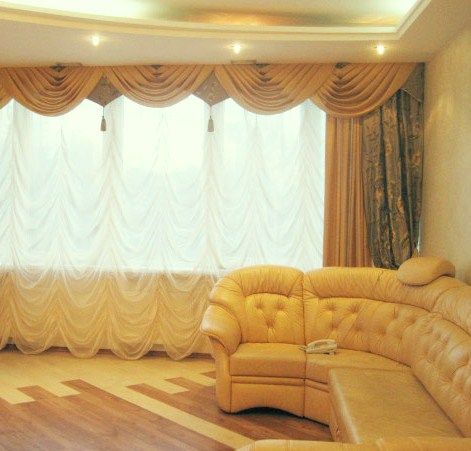
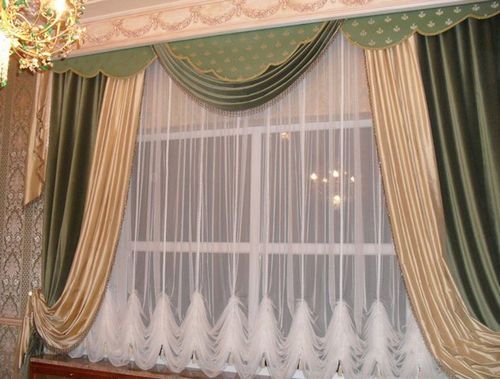
- workers- they are used in new types of cornices and are regulated by means of a lifting mechanism controlled by a remote control;
- Decorative- canvases, which are controlled exclusively by hand.
Applications
Initially, awnings were used to curtain windows in rooms for celebrations - banquet halls, palaces, theaters, restaurants. But you can use them in the conditions of an ordinary apartment, at home. These curtains, due to their splendor, are perfect for decorating windows in the living room, bedroom. In the hall, the French curtain will become the main accent of the interior; against its background, ordinary furniture will seem expensive and refined.
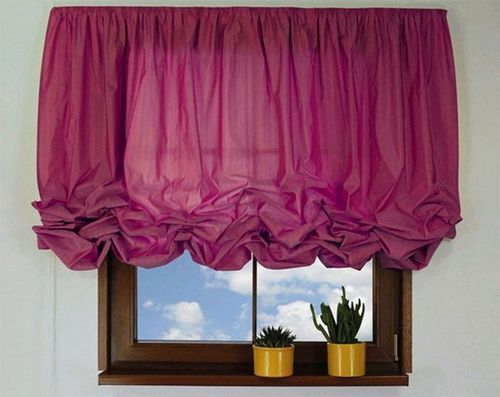
French curtains will add romanticism and elegance to the interior of the bedroom. All this thanks to the soft folds that carry the charm of France. Even in the children's room, awnings will be appropriate. Made of thin material, they will give the room lightness. You can decorate them with bows, butterflies, decorative elements that will be of interest to the child.
Advice: for a nursery, it is better to choose French curtains up to the windowsill, so the child will not touch them during the game.
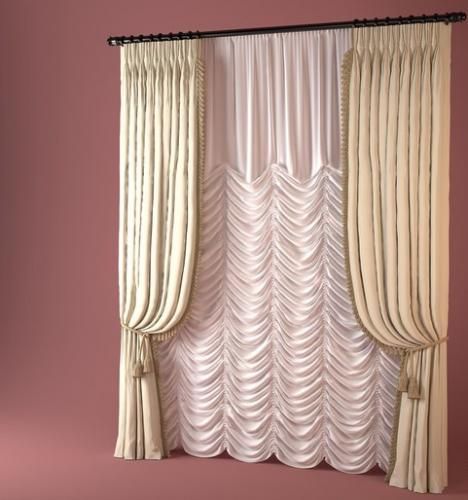
The classic design of the kitchen is complemented by elegant awnings. They will turn any meal into an important feast. The length of the curtain should also be small so that the product does not interfere with cooking and cleaning.
French curtains in the office will be appropriate. They emphasize the formality of the situation and the importance of the conversation.
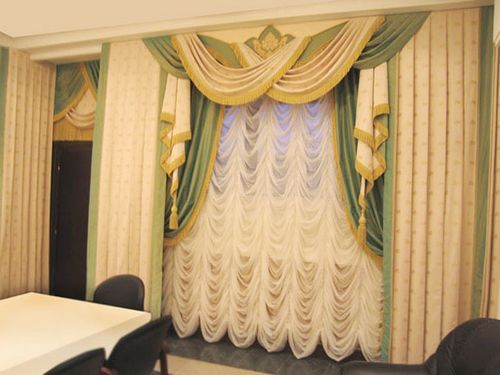
The effect produced by French curtains will depend on the type and texture of the material used for their tailoring, as well as the conformity of the design of the product with the dimensions and style of the room. Considering that the awnings were originally intended to give the room a solemn look, they will look good in rooms with large windows and high ceilings.
This window drapery will give the interior sophistication, nobility, solemnity, and even some pomposity. It will adequately frame the awnings and give the interior a finished look with a lambrequin, or classic curtains.
Production of French curtains, materials
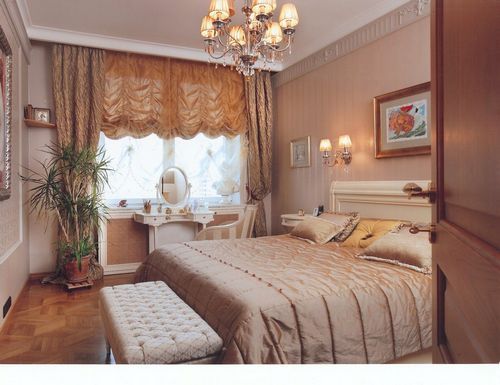
Awnings are sewn from light fabrics - silk, cambric, organza, veils. Classic French curtains are made of dense silk, pleasant to the touch. It can be smooth, or have a damask pattern. This texture of the canvas allows you to form beautiful, smooth folds from it.
From synthetic materials for sewing awnings, polyester is used. In terms of performance, it is superior to silk, but is more practical and cheaper.
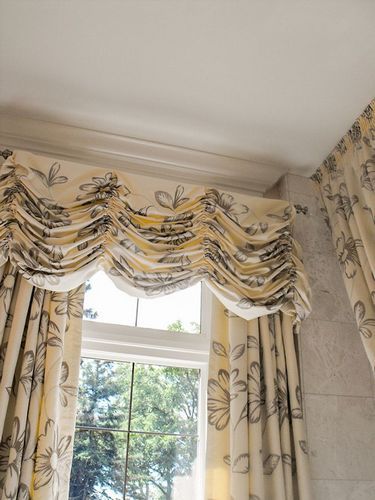
Design features
The width of the finished curtain panel corresponds to the length of the cornice, or slightly exceeds it (for the formation of assemblies). When sewing a product with your own hands, it is necessary to make allowances for the formation of scallops along the height of the fabric (this indicator exceeds the size of the finished product by 1.5-2.5 times).
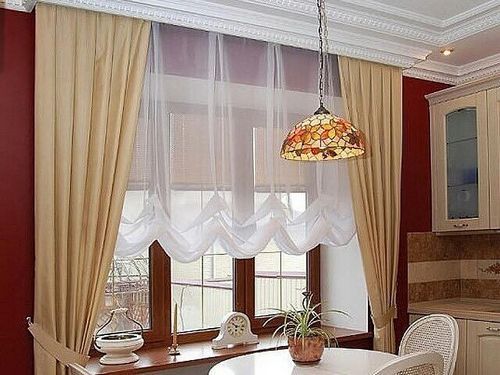
Material calculation
To form the drapery, special rings and gathering braid are used. Its length is calculated by the formula: l=h*f+h. Where h is the height of the cut of the canvas, f is the number of scallops.
Features of cutting fabric
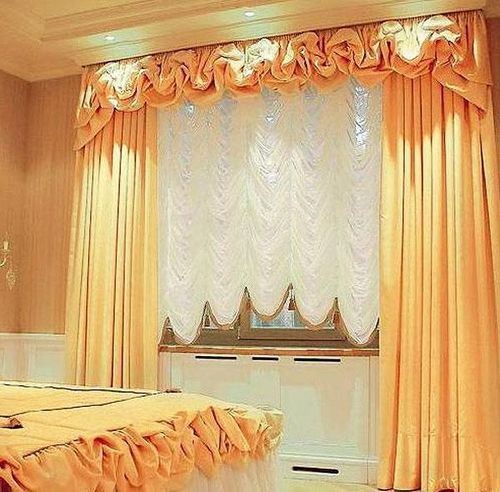
Before starting to draw up a sketch, it is necessary to take measurements of the window opening. Next, you need to determine the width of the product. To do this, the length of the cornice board (width of the window opening + 5 cm) is multiplied by 2 and 10 cm is added to the resulting figure (allowances for two hem seams. This calculation formula allows you to make small assemblies along the width of the fabric. If you do not need them, then the width of the panel must correspond to the length of the cornice + 4 cm is added to the processing of the curtains from the sides.
To calculate the length of the curtain, the formula is used: h (desired product height) * 2 + 2 cm (for the design of the top seam) + 5 cm (for the bottom hem).
![]()
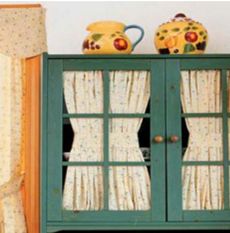
In order for the curtain to look beautiful, not sag and not be too tight, it is necessary to determine the optimal number of scallops. A table will help in this, in which the number of warehouses is calculated depending on the width of the curtain panel.
![]()
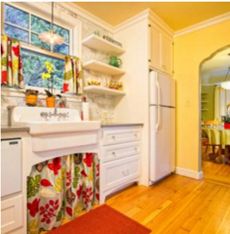
The optimal distance between the scallops is 50-60 cm. But narrower folds can be formed - about 30 cm wide. The vertical distance between them should be in the range of 12-24 cm.
Advice: so that the French curtain does not rise when there is a draft, or when a window is opened, special weights are sewn to its lower edge.
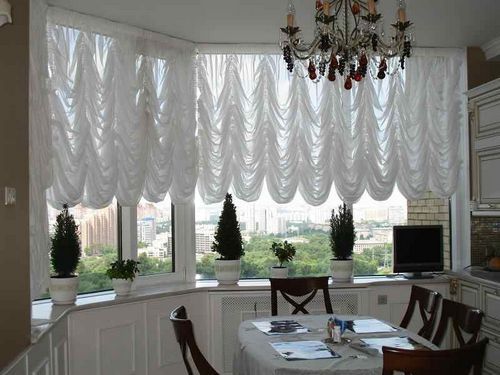
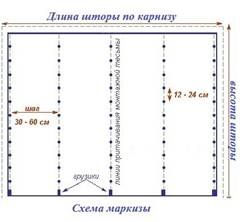
After cutting, you will get a rectangular piece of fabric. On the back side of the panel, the location of the scallops is marked. To do this, outline the vertical and horizontal lines along which the gathering braid will be sewn. After that, the curtain is turned inside out. The braid is preliminarily fixed on the cloth with pins so that its lower end coincides with the edge of the awning. On the sides of the product, the braid is placed close to the side edge.
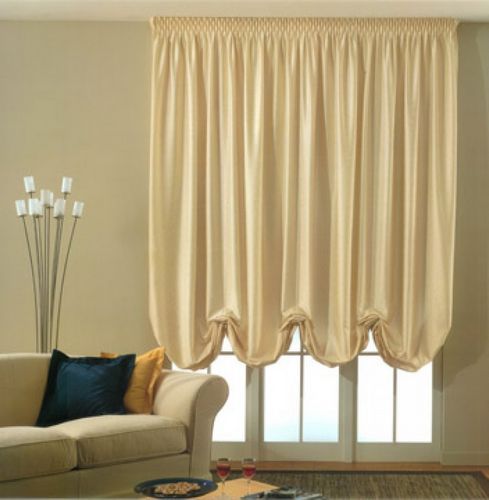
The lower edge of the braid is tucked 2.5 cm, having previously ironed and pulled out the cords from it to tighten the folds. When processing the sides, the edge is cut off and processed with a seam "in the hem".
Next, proceed to the formation of the top of the curtain. The curtain tape is applied to the fabric 4 cm from the front side and stitched together. The product is turned inside out, and stitched again along this first line, and then pass along the bottom edge of the tape. This stage of sewing curtains can be final. After this, the cords of the tape are pulled together, forming folds.
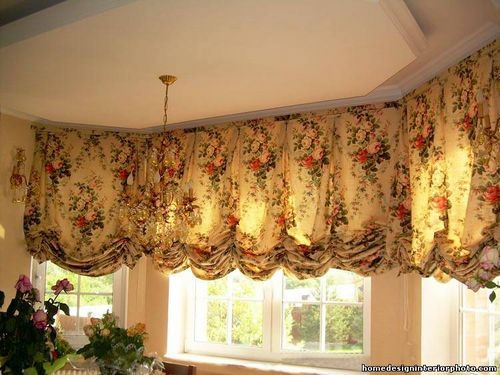
On a note: on the upper edge, you can make a small scallop (0.5-1 cm), which will cover the hooks. But for this, at the cutting stage, double the height of the scallop should be laid.
If the awning is lifting, the locations of the rings are marked on the cloth. Their bottom row should be located at a height of 5 cm from the lower edge of the awning, and the top row - 12 cm. Sew the rings in 4 stitches with a double thread, securing the part with a double knot. The formation of folds begins only after sewing on all the rings. The braid threads are pulled together neatly, making uniform folds. The width of the upper border is adjusted in size to the cornice board. The ends of the threads are tied as close as possible to the cloth and cut off.
Next, proceed to fitting the cornice board with a finishing cloth. To do this, the tape is cut to the width of the finished curtain. That part of it, where the hooks are located, is nailed to the front edge of the eaves board with small carnations. The second side is sewn to the braid located along the upper edge of the awning. The curtain is attached to hooks driven into the board, carefully aligning the panel.
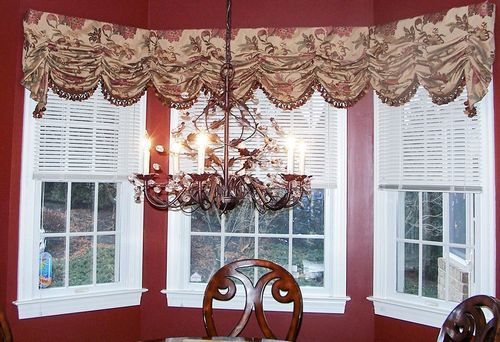
The cords are threaded into the rings, starting from the bottom edge of the product. Each ring is secured with a knot at the bottom. At the top, all ends of the cords are passed through the hooks of the cornice board and the curtains are brought out to one side. Then they are pulled together, evenly placing the folds over the entire panel of the awning. Fasten the scallops with ribbons.
After installing the cornice board with the awning over the window, the ribbons are removed and the curtain is lowered. The connected ends of the cords are tied in a knot so that it is located behind the last hook. Then they are threaded through the handle to raise the awning and another knot is tied at a distance of 46 cm from the first. Next, the ends of the cords are cut off, fasteners are installed, around which the cord is wrapped to fix the curtain in the desired position.
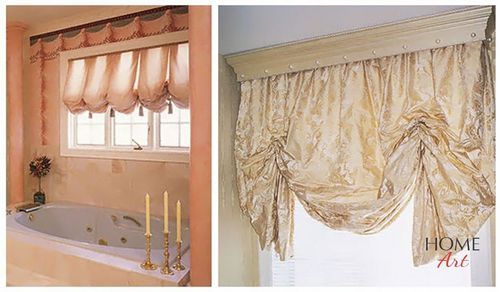
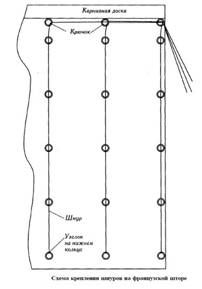
Ways to combine awnings with other types of window framing
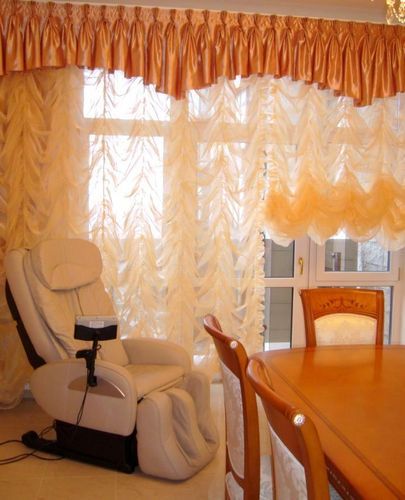
French curtains go well with:
- curtains;
- Lambrequins;
- Fringed;
- Golden threads (muslin);
- glass beads;
- Kantami.
A win-win option is a combination of awnings with classic curtains. Scallops framed by a lambrequin also look beautiful.
Advice: various decorations, accessories - decorative cords, fringe, beads will complement the folded fabric. They will give the product individuality and originality.
Awning care
French curtains are unpretentious in care - it is enough to periodically clean them with a vacuum cleaner. Awnings made of synthetic fabric can be washed. Ironing of the product is done in a wet state. But if these curtains are made of natural material, it is not recommended to wash them yourself - the folds may lose their shape.
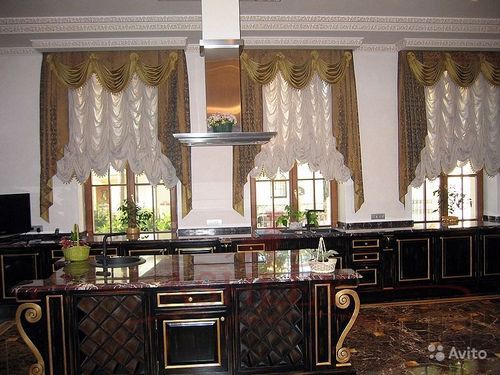
Proper care will keep your French blinds in top condition and extend their lifespan by several years.
